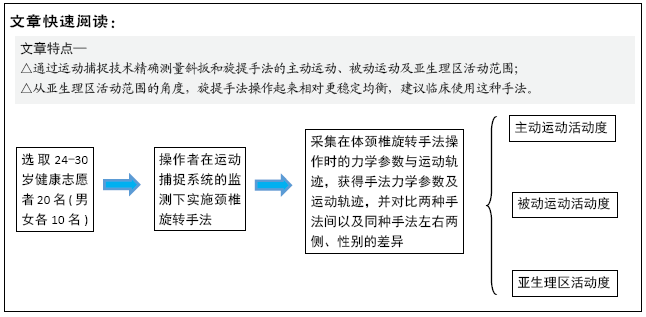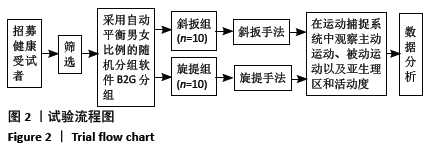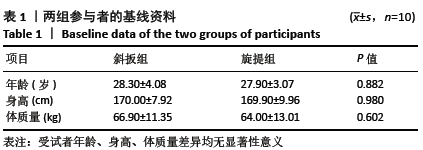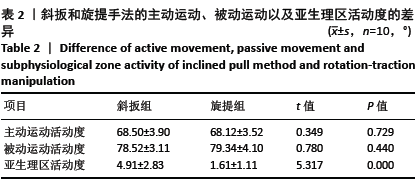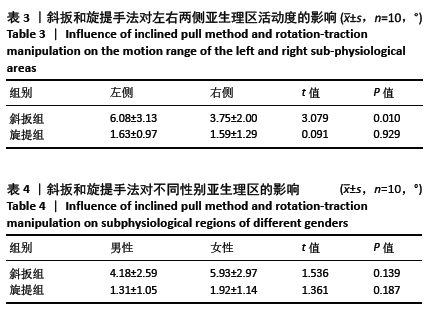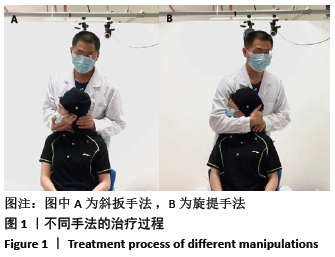[1] LV Y, TIAN W, CHEN D, et al. The prevalence and associated factors of symptomatic cervical Spondylosis in Chinese adults: a community-based cross-sectional study. BMC Musculoskelet Disord. 2018;19(1):325.
[2] WANG C, TIAN F, ZHOU Y, et al. The incidence of cervical spondylosis decreases with aging in the elderly, and increases with aging in the young and adult population: a hospital-based clinical analysis. Clin Interv Aging. 2016;11:47-53.
[3] 柯尊华,王静怡.颈椎病流行病学及发病机理研究进展[J].颈腰痛杂志,2014,35(1):62-64.
[4] 章薇,李金香,娄必丹,等.中医康复临床实践指南·项痹(颈椎病)[J].康复学报,2020,30(5):337-342.
[5] 陈威烨,章柯杰,张聪,等.神经根型颈椎病保守疗法的指南回顾[J].中国乡村医药,2020,27(19):74-76.
[6] 岳寿伟,魏慧,邵山.颈椎病评估与康复治疗进展[J].中国康复医学杂志,2019,34(11):1273-1277.
[7] 崔立军,鲍勇,陈昕,等.中国康复临床实践指南的质量评价[J].中国循证医学杂志,2019,19(6):723-728.
[8] 杨珂.颈椎病的络病病机与临证治则辨析[J].光明中医,2017,32(16): 2310-2311.
[9] 邢丹,王斌,侯云飞,等.中国骨科临床实践指南的质量评价[J].中国循证医学杂志,2017,17(3):347-356.
[10] 邓真,沈知彼,詹红生,等.石氏定位旋扳法治疗神经根型颈椎病的疗效观察[J].中国中医骨伤科杂志,2020,28(5):5-9.
[11] 陈黎明,许根荣,郭盛君,等.仰卧定点复位法治疗神经根型颈椎病中手法发力方向对疗效的影响[J].中华中医药杂志,2020,35(4): 2189-2192.
[12] HUANG X, YE L, WU Z, et al. Biomechanical Effects of Lateral Bending Position on Performing Cervical Spinal Manipulation for Cervical Disc Herniation: A Three-Dimensional Finite Element Analysis. Evid Based Complement Alternat Med. 2018;2018:2798396.
[13] 黄学成,叶林强,江晓兵,等.不同体位下颈椎旋转手法对颈椎间盘位移和内在应力的影响[J].中国康复理论与实践,2017,23(12): 1470-1475.
[14] ZHOU ZL, SU GH, ZHENG BZ, et al. Randomized controlled trials of needle knife therapy combined with rotation traction manipulation for the treatment of cervical spondylotic radiculopathy. Zhongguo Gu Shang. 2016;29(9):820-824.
[15] JOHN S, TAVEE J. Bilateral diaphragmatic paralysis due to cervical chiropractic manipulation. Neurologist. 2015;19(3):65-67.
[16] TURNER RC, LUCKE-WOLD BP, BOO S, et al. The potential dangers of neck manipulation & risk for dissection and devastating stroke: An illustrative case & review of the literature. Biomed Res Rev. 2018;2(1):10.15761/BRR.1000110.
[17] HUANG Y, LI S, FENG M, et al. Cervical Spine Mechanism for Reproduction of the Biomechanical Behaviours of the Human Neck during Rotation-Traction Manipulation. Appl Bionics Biomech. 2017; 2017:5829048.
[18] 梅凌,李义凯,付小勇,等.颈椎旋转手法的亚生理区范围及临床意义[J].中国中医骨伤科杂志,2009,17(12):8-10.
[19] 姚斌彬,阿蓉,于天源.于天源教授治疗神经根型颈椎病的临床经验[J].中华中医药杂志,2012,27(4):1160-1163.
[20] 朱立国,冯敏山,毕方杉,等.颈椎旋转(提)手法的在体力学测量[J].中国康复医学杂志,2007(8):673-676.
[21] BURKE M, LASENBY J. Estimating missing marker positions using low dimensional Kalman smoothing. J Biomech. 2016;49(9):1854-1858.
[22] 冯敏山,朱立国,魏戌,等.颈椎旋提手法操作轨迹的动态捕捉研究[J].中国康复医学杂志,2011,26(2):176-177.
[23] 李远栋,王平,李嘉钰,等.基于动态捕捉技术定点侧屈旋扳整颈手法在体运动学研究[J].辽宁中医杂志,2019,46(12):2565-2567, 2687.
[24] 李建国,王平,李嘉钰,等.运动捕捉摇拔戳手法治疗踝扭伤运动轨迹相关问题研究[J].中国中医骨伤科杂志,2018,26(9):19-22,27.
[25] 冼思彤,于天源,刘卉,等.颈椎侧扳法操作轨迹的动力学和运动学分析[J].中华中医药学刊,2015,33(4):850-852.
[26] LIGUO Z, MINSHAN F, XUNLU Y, et al. Kinematics Analysis of Cervical Rotation-Traction Manipulation Measured by a Motion Capture System. Evid Based Complement Alternat Med. 2017;2017:5293916.
[27] NGAN JM, CHOW DH, HOLMES AD. The kinematics and intra- and inter-therapist consistencies of lower cervical rotational manipulation. Med Eng Phys. 2005;27(5):395-401.
[28] LI YK, ZHU QA, ZHONG SZ. The effect of cervical traction combined with rotatory manipulation on cervical nucleus pulposus pressures. J Manipulative Physiol Ther. 1998;21(2):97-100.
[29] VERES SP, ROBERTSON PA, BROOM ND. The influence of torsion on disc herniation when combined with flexion. Eur Spine J. 2010;19(9): 1468-1478.
[30] SCHMIDT H, KETTLER A, HEUER F, et al. Intradiscal pressure, shear strain, and fiber strain in the intervertebral disc under combined loading. Spine (Phila Pa 1976). 2007;32(7):748-755.
[31] 江永桂.理筋手法联合下颈段抗阻运动训练治疗颈型颈椎病临床观察[J].河北中医,2019,41(10):1555-1558.
[32] 蔡俊燕,王司晔.牵引联合Mulligan手法治疗青年颈型颈椎病效果观察[J].交通医学,2016,30(4):330-332.
[33] 王琼,朱国苗.手法治疗颈型颈椎病临床疗效和安全性系统评价[J].中华中医药杂志,2014,29(12):3716-3723.
[34] 王凤林.硬膜外阻滞联合颈椎手法整复治疗颈椎间盘突出症的临床研究[J].实用医技杂志,2013,20(9):1000-1001.
[35] PEOLSSON A, ALMKVIST C, DAHLBERG C, et al. Age- and sex-specific reference values of a test of neck muscle endurance. J Manipulative Physiol Ther. 2007;30(3):171-177. |
